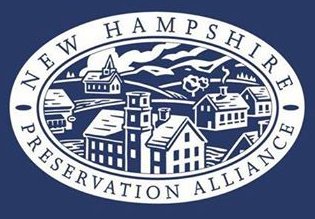Seven to Save 2023: Tramp Houses
Between the Civil War and the Great Depression, America experienced demographic shifts and economic panics. Even New Hampshire’s smallest communities were affected by these national trends. Combined with the expansion of railroads and improved road networks, a generation of transients, called tramps, was born.
Hampton’s 1892 history book stated that tramps “strolled idly from town to town, begging or stealing their support, and often committing deeds of violence and lust. No picnic grove or berry pasture, no secluded road or lonely house was a safe resort for the unprotected.” Undercover journalists reported on the lifestyles of these men, their routes, and their nicknames. An entire language developed in the form of markings on fence posts and barns. This graffiti warned of vicious dogs, lazy constables, and generous households.
Tramps became so numerous that New Hampshire passed a state law in 1875 that sentenced anyone caught publicly begging for up to six months at the town or county poor farm. When this law overwhelmed local institutions, the legislature passed a new state law in 1878. The new law, called “Marston’s Law,” sent beggars and tramps to state prison for hard labor for up to five years.
Without police departments, most towns could not enforce this law, though. Instead, taxpayers built small, often unfinished buildings called tramp houses. There was no standard design, but most tramp houses were remarkably similar – no more than 200 square feet, with simple gable roofs, a single door and window, and a chimney. Several served a dual purpose as a jail, or lock-up. Nearly all were built of wood, sometimes lined with sheet metal to prevent fires.
Towns were also required to provide food and firewood to tramps. Town reports between the 1870s and 1940s outlined these expenses, often under the welfare or police budgets.
Today, only seven known free standing tramp houses remain: in Richmond, Grafton, Weare, Errol, Barnstead, Kingston, and Hill. But there are likely others, now used by highway departments or as cemetery sheds. While some have been restored, others remain in poor condition.
The Preservation Alliance hopes to increase awareness of these now rare and unique historic resources and crowdsource more information about other existing tramp houses. Other goals include funding a contextual history, encouraging the few remaining tramp houses to join the state register of historic places, and direct restoration dollars to save these interesting survivors of a forgotten past.
Stay up to date on this program, including when submissions open for next year’s list, and browse listees from past years (we’ve been highlighting endangered properties since 2006!) by visiting the Seven to Save homepage.
Are you part of a group involved with one of our previous listees? We’d love to hear how you’re doing! Call us at (603) 224-2281 or email seventosave@nhpreservation.org.

